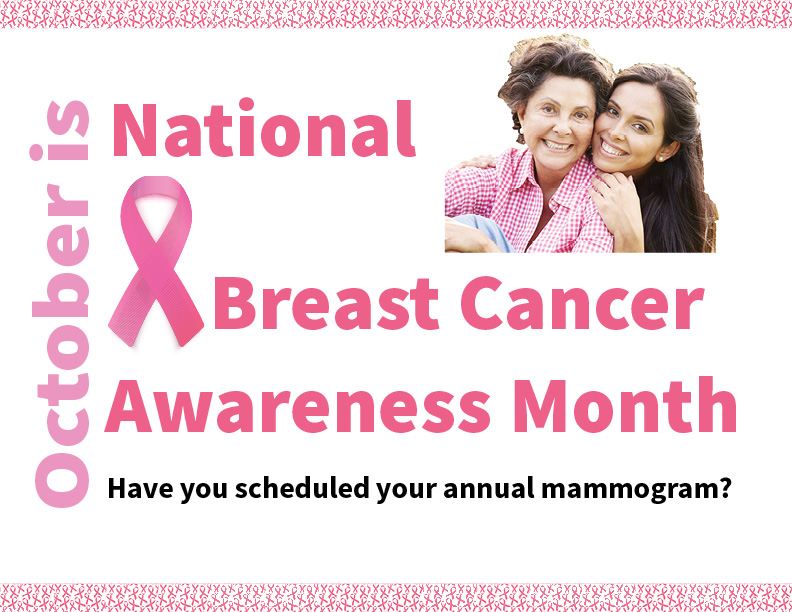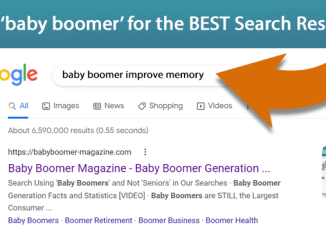
Facts About Baby Boomer Women and Breast Cancer
 October is Breast Cancer Awareness Month, which is an annual campaign to increase awareness of the disease.
October is Breast Cancer Awareness Month, which is an annual campaign to increase awareness of the disease.
Women of the Baby Boomer Generation (born between 1946 and 1965), have over a 25% risk that they will be diagnosed with Breast Cancer, greater than women in their mid-40’s and early 50’s of 21%. 51% of those diagnosed with Breast Cancer are Baby Boomer Women.
Many Breast Health Experts recommend continuing yearly Breast Cancer Screening Mammograms for a woman in their 70’s and 80’s. The stopping point is a personal decision. It is very important to have these conversations with a physician. For each woman, risk factors like family history, genetics, and life expectancy need to be considered.
Breast cancer screening is meant to catch cancer early, when it is small and when there are several treatment options. That’s why bi-annual mammograms are so important for Baby Boomers. “If breast cancer is caught early enough in a 74-year-old woman, her treatment options are wide open.
- Swelling of all or part of a breast (even if no distinct lump is felt)
- Skin irritation or dimpling (sometimes looking like an orange peel)
- Breast or nipple pain.
- Nipple retraction (turning inward)
- Redness, scaliness, or thickening of the nipple or breast skin.
- Nipple discharge (other than breast milk)
- Risk factors. The exact cause remains unclear, but some risk factors make it more likely. …
- Age. The risk increases with age. …
- Genetics. …
- A history of breast cancer or breast lumps. …
- Dense breast tissue. …
- Estrogen exposure and breast-feeding. …
- Body weight. …
- Alcohol consumption.
Most chronic cancers cannot be cured, but some can be controlled for months or even years. In fact, there’s always a chance that cancer will go into remission.
If an abnormality is detected on a screening mammogram, your doctor may recommend a diagnostic mammogram to further evaluate that abnormality. Breast ultrasound. … Ultrasound may be used to determine whether a new breast lump is a solid mass or a fluid-filled cyst. Removing a sample of breast cells for testing (biopsy).
Yes, place a pillow under your right shoulder and your right arm behind your head. Using your left hand, move the pads of your fingers around your right breast gently in small circular motions covering the entire breast area and armpit. Use light, medium, and firm pressure. Squeeze the nipple; check for discharge and lumps.
Can you Die from Breast Cancer?
Breast cancer is the second most common cause of death from cancer in women. It is estimated that 42,260 people (41,760 women and 500 men) will die from breast cancer this year. Metastatic breast cancer will cause the vast majority of those deaths. … The 5-year survival rate for men with metastatic breast cancer is 25%.
Breast cancer research funding has grown considerably. In 1990 the US federal government spent less than $100 million on the disease. Now the government and top private foundations spend at least $1 billion annually. And there has been a massive increase in mammography screening.
Baby Boomers need to pressure research funding organizations and other policymakers to ensure that intellectual property agreement does not hinder access to important treatments, preventive or diagnostic measures. Until 2013, for example, genetic testing on genes linked to breast and ovarian cancer was extremely expensive in the United States due to a patent-based monopoly held by biotechnology company Myriad Genetics. But public interest lawyers, civil society groups, and other citizens fought against the patent, and now the technology is cheaper and more widely available. The competition that has emerged may produce more research and better testing too.
If we continue to focus our advocacy on disease awareness efforts, then we will only make limited progress toward our real goals. We must think strategically about generating the same kind of public engagement in all the other steps down the long road toward better health and cures.



